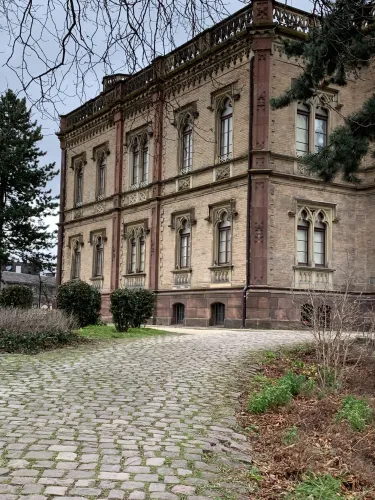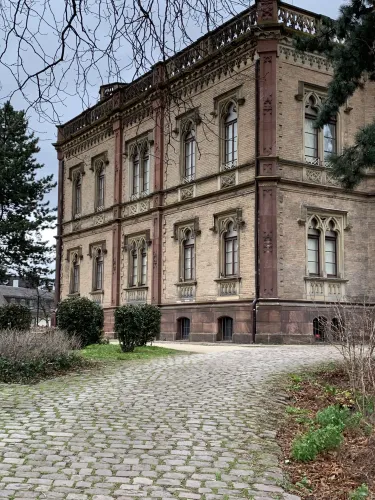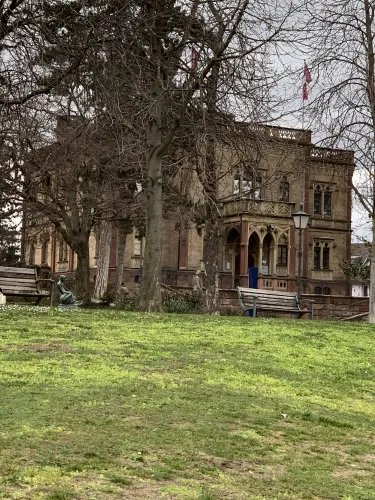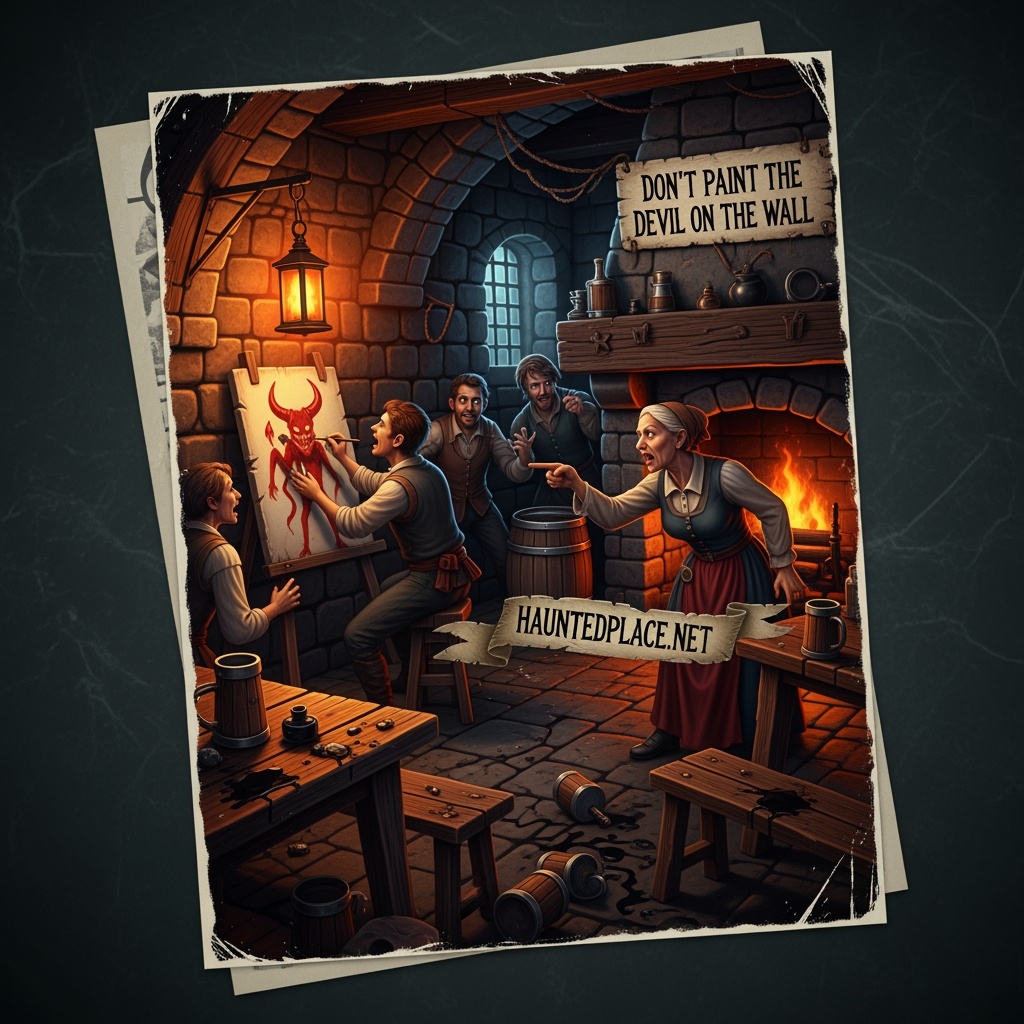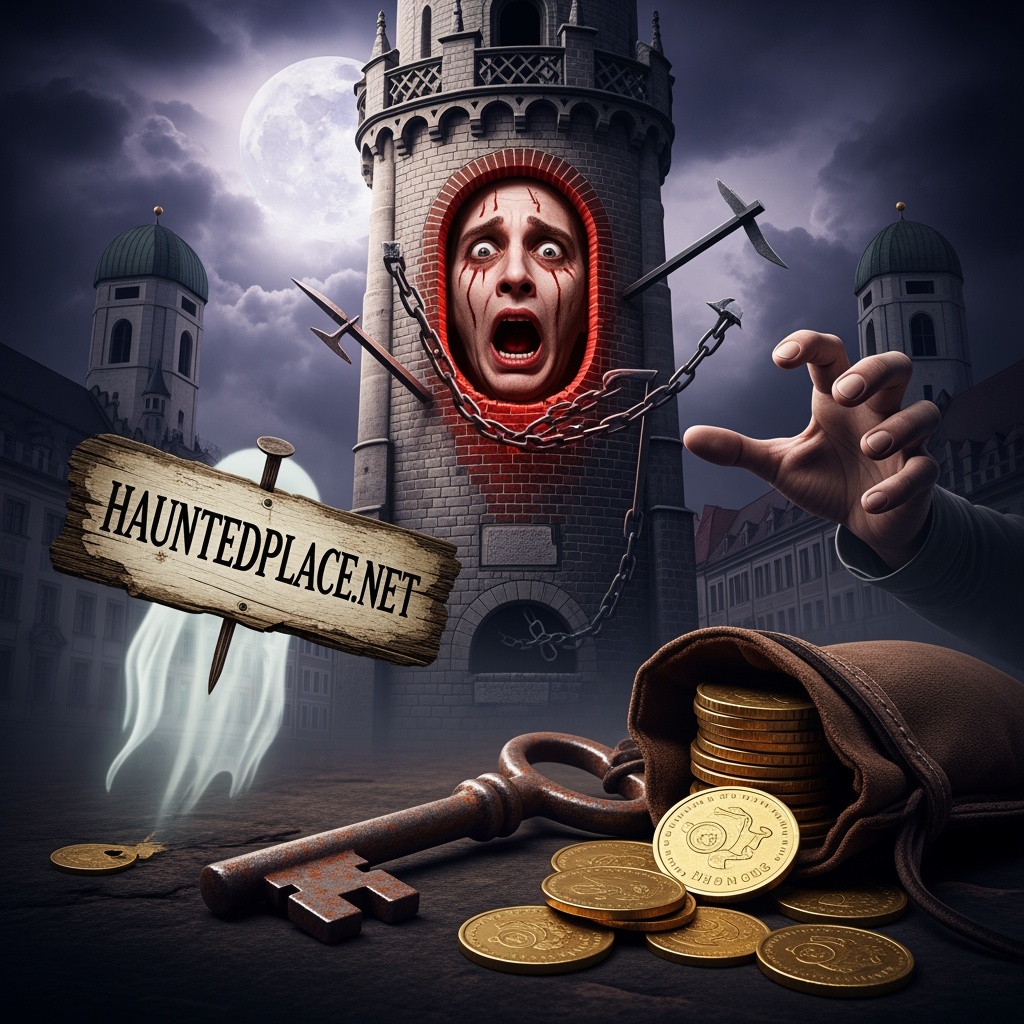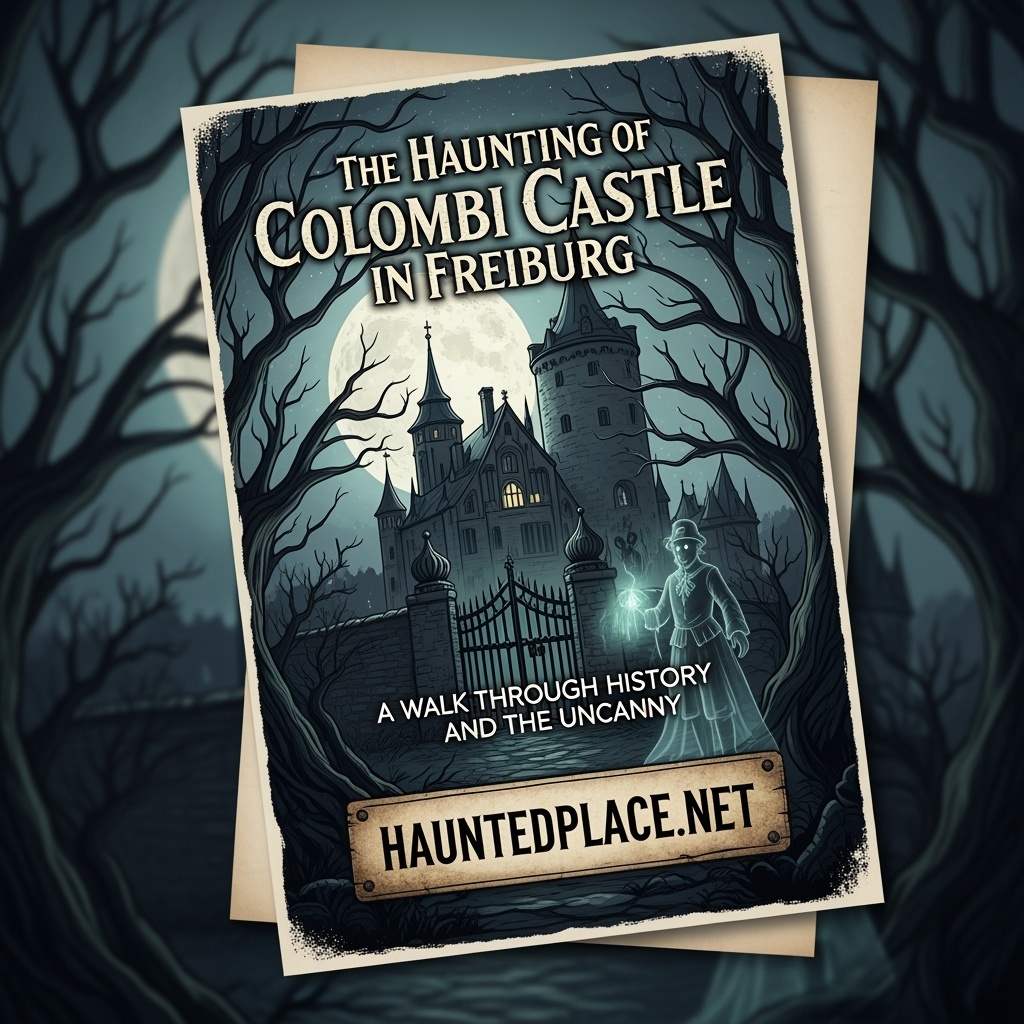
The Colombischlössle, a neo-Gothic masterpiece, sits majestically atop a former bastion of the Vauban fortifications in Freiburg. This impressive Tudor-style villa was built between 1859 and 1861 by the extravagant Countess Maria Gertrudis Antonia de Colombi y de Bode, based on a design by architect Georg Jakob Schneider. However, the countess lived in this magnificent building for only three years. It still occupies a central place in the city and is the legacy of a family whose name and stories are still alive today. The villa, built in the English Gothic style, already hints at the fascinating origins of its dazzling builder. Her grandmother, Mary Kynnersley of Loxley Park, came from England and married the German Baron Karl Ludwig Friedrich August von Bode in London in 1775. The couple had 11 children, one of whom was the famous Baroness Marie, with whom they were forced to emigrate after the French Revolution. The baron, who served as an officer in a foreign regiment, found refuge in Saint Petersburg in 1796. There, with the support of Tsarina Catherine, he managed to obtain an estate in Crimea and a life-long pension that was guaranteed even after his death. Baroness Marie, born in 1782, also experienced an extraordinary connection in her life. In 1805, the then 27-year-old baroness met the 60-year-old Spanish consul general Don Antonio Colombi y Payet. He was a man who successfully traded in wine, oil, and colonial products and moved in aristocratic circles. In short, he was an extremely good match. Despite her mother’s serious concerns about the age difference, the marriage took place in 1807 through the mediation of Tsar Alexander I. However, Don Antonio died in 1811, leaving his young widow with their two-year-old daughter, Maria Gertrudis Antonia Clementia. Thanks to her father’s efforts, the little countess was given the title of Countess Colombi, Vice-Countess of Bode, and the rank of Grandee of Spain. The widow, Countess Marie de Colombi, was now faced with the challenge of rebuilding her life. She lived in France and England before finally settling in Freiburg on Erasmusstraße. On February 1, 1830, Countess Marie acquired citizenship of Freiburg. Her daughter, Maria Gertrudis, married Count Salvador de Zea Bermudez y Buzo in 1832. He was also in the diplomatic service, and the family moved to Paris, later to Brussels, Lisbon, and Vienna. However, fortune did not always smile on the countess, as her husband died of appendicitis in 1852 at the age of only 49. Countess Colombi y de Bode was now alone with her seven children, several of whom died at an early age. After years of wandering, she decided to return to Freiburg with her two daughters, Maria do Loreto and Maria Cristina. They initially lived on Karlsplatz before the countess had her own widow’s residence, the legendary Colombischlössle, built, which she only lived in for three years until her death on August 6, 1863. Three years after the countess’s death, her daughter Maria Cristina died of food poisoning. She had been due to marry Count Richard von Kageneck the following day. Following these tragic deaths, the siblings Fernando, Salvador José, and Maria do Loreto sold the villa and its grounds between 1867 and 1869. Since November 28, 1983, this historic building, which miraculously survived all wars, has been home to the Museum of Prehistory and Early History, better known today as the Archaeological Museum, which attracts not only history buffs but also curious visitors who are willing to immerse themselves in the mysterious stories associated with this place. For when the sun goes down, the shadows of the old walls cast eerie images onto the lawn in front of it. Legend has it that in the night hours, a black poodle with glowing eyes roams the courtyard. Its piercing gaze makes your blood run cold. Tradition traces the origin of the black poodle back to the countess’s father, the Spanish consul general Don Antonio Colombi y Payet, whose wealth allegedly came from questionable sources. Rumor has it that he amassed his fortune not only through trade in goods, but also through the slave trade. As punishment for his greed and misdeeds, his soul is said to have been banished into the form of a poodle, restless and condemned to wander eternally in the night hours. Many say that you can still hear him howling when the moon is full and the wind whistles through the trees. In addition to the black poodle, there is also a woman in a white dress who floats above the roof of the castle at night. This mysterious female figure, known as the White Bride of Freiburg, is said to be the countess’s daughter, Maria Cristina, who mysteriously died from poisoned food before her wedding to Count Richard von Kageneck. Since then, the fallen bride has appeared in her white dress, wandering over the roofs of the castle, her presence a constant reminder of the losses and secrets of her life. If you are wondering how all these stories are connected to the city of Freiburg, we recommend a walk to the Old Cemetery, where Maria Gertrudis Antonia de Colombi y de Bode, her mother Marie de Colombi, and her daughter Maria Cristina de Zea Bermudez y Colombi found their final resting place. The Colombischlössle and its surroundings are not only a place of historical interest, but also a space where stories of loss, grief, and the supernatural intertwine. Whether you are looking for relaxation or are interested in eerie tales, this place has something for everyone. The legends surrounding Countess Maria, the tragic history of her family, and the restless souls are like thick storm clouds hanging over the city. But perhaps it is precisely this eerily beautiful atmosphere that captivates Freiburg residents and tourists year after year. And so the question remains: what will you discover on your next visit? Perhaps you will encounter the black poodle or even see the white bride gliding over the roof of the Colombischlössle, because the stories of the past are just waiting to be retold.


